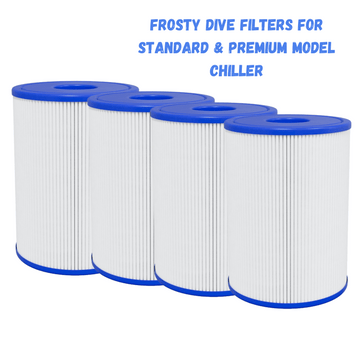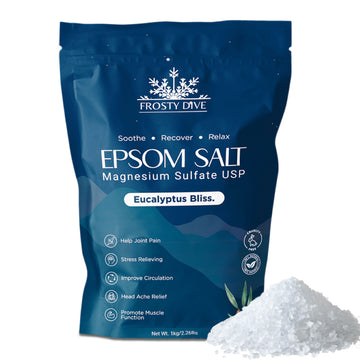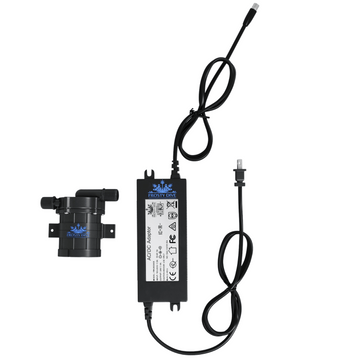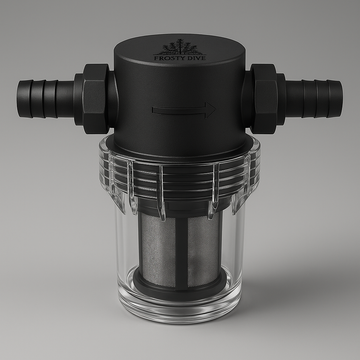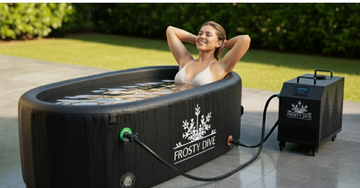Ice barrel therapy can be a valuable addition to your recovery routine. By following the right guidelines, you can maximize its benefits for your muscles, circulation, and mental health. Here’s how to incorporate ice barrel therapy effectively into your daily or weekly schedule.
Recommended Duration and Frequency of Use
The duration and frequency of your ice barrel sessions will depend on your personal goals and tolerance levels. However, there are general guidelines that can help you get the most out of each session.
For most people, starting with 5 to 10-minute sessions is a good idea, especially if you are new to cold therapy. You can gradually increase the time to 15 minutes as your body becomes more accustomed to the cold. Staying in the ice barrel for longer than 15 minutes isn’t recommended, as prolonged exposure to cold can have negative effects on your body.
As for frequency, it’s typically safe to use the ice barrel 2 to 3 times per week. This allows you to reap the benefits of muscle recovery and improved circulation without overdoing it. Some athletes may choose to use it more frequently, especially after intense training sessions. Listen to your body and adjust based on how you feel.

Combining Ice Barrel Therapy with Other Recovery Methods
While ice barrel therapy is an excellent recovery tool on its own, it can be even more effective when combined with other recovery methods. Here are a few techniques that pair well with ice barrel therapy:
Stretching: After your ice barrel session, consider doing gentle stretches. Stretching can help maintain flexibility, reduce muscle tightness, and improve range of motion. Just be sure to wait until your body has warmed up after the cold exposure.
Foam Rolling: Foam rolling is a form of self-massage that can help release tension in the muscles. When done after an ice barrel session, foam rolling helps improve muscle recovery by promoting blood flow and reducing tightness.
Hydration: Cold therapy can sometimes lead to dehydration, so it’s important to drink plenty of water before and after your ice barrel session. Staying hydrated ensures that your body can perform its recovery functions effectively.
Rest: Giving your body enough time to rest and recover is just as important as using the ice barrel. Make sure you are getting enough sleep and taking time to relax. Sleep allows your muscles to repair and grow stronger.
Heat Therapy: While ice therapy helps reduce inflammation, heat therapy can be used on other days to soothe sore muscles and improve circulation. Alternating between cold and heat therapy is a popular method among athletes for balanced recovery.
By combining these methods with ice barrel therapy, you can create a well-rounded recovery plan that addresses various aspects of muscle repair, flexibility, and overall wellness.
Common Questions About Ice Barrels
If you’re considering incorporating an ice barrel into your routine, you may have some questions about its effectiveness, durability, and cost. Here are answers to some common questions:
1. How Much Does an Ice Barrel Cost?
The price of an ice barrel can vary depending on the brand, material, and size. On average, you can expect to pay anywhere from $500 to $1,000 for a good-quality ice barrel. While this might seem like a significant investment, many people find the benefits it offers in terms of recovery and mental health to be well worth the cost. Additionally, buying an ice barrel can save you money in the long run compared to spending on spa treatments or gym memberships with cold therapy options.
2. How Durable Are Ice Barrels?
Ice barrels are built to last, especially when made from durable materials such as high-quality plastic or metal. These materials are designed to withstand cold temperatures and frequent use. With proper care, an ice barrel can last for many years. It’s important to follow the manufacturer’s instructions for maintenance, such as regularly cleaning the barrel and ensuring it is properly insulated to prevent cracks or damage from freezing temperatures.
3. How Effective Is Ice Barrel Therapy?
Ice barrel therapy is a proven and effective method for muscle recovery and reducing inflammation. Many athletes and wellness enthusiasts have reported feeling faster recovery times, reduced soreness, and improved circulation after using ice barrels. The cold immersion helps decrease muscle inflammation and encourages blood flow, which are essential for recovery. In terms of mental health, it also offers stress relief and mood improvement, making it a well-rounded recovery tool. While results can vary depending on individual circumstances, most users find it to be highly beneficial.
Conclusion
Incorporating ice barrel therapy into your routine can be a game-changer for recovery, both physically and mentally. From reducing muscle inflammation to boosting circulation and even improving mood, the benefits of ice barrel therapy are well worth considering. By following the recommended duration and frequency, combining it with other recovery techniques, and answering common questions about its cost and durability, you can make the most of this simple yet effective tool.
If you're looking for a way to enhance your recovery process, reduce muscle soreness, and promote mental well-being, ice barrel therapy is a great option. Whether you're an athlete or someone looking to improve your health, this therapy can be a key component of a healthy lifestyle. Give it a try, and experience the benefits for yourself.













